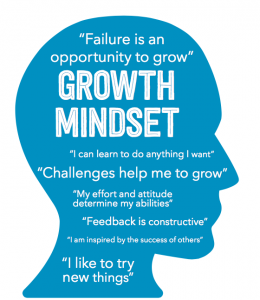I think we would all agree this is a topic we need to explore for the children at our school and perhaps our broader community. The bulk of this is from an article online but I have included some other resources at the bottom. Hope you find something useful.
Grit and Resilience
According to Angela Duckworth, a researcher, a MacArthur Fellowship winner and with a TEDtalk with over 8 million views, grit is “perseverance and passion for long-term goals.”
Duckworth’s research has evolved around discovering why some individuals accomplish more than other individuals despite having the same talent, intelligence, and resources. She has studied an assortment of subjects from spelling bee students to West Point hopefuls in attempting to define the essence of grit.
She has discovered that grit can be related to how much you can inspire yourself, access your passion, and sustain your motivation. Want to test your grit? Try her online questionnaire.
How is grit different from resilience?
Resilience involves the ability to get back up when you’ve been knocked down or to come back fighting stronger after a loss.
The subtle differentiating factor between these two deeply entwined character traits seems to be that resilience is the optimism to continue when you’ve experienced some failures and times are so tough that others see continuing as futile or impossible. While Grit is the motivational drive that keeps you on a difficult task over a sustained period of time.
Is the amount of grit and resilience something that you’re born with and limited to, or are these resources that you can deplete and expand?
A Growth Mindset
Carol Dweck’s work has shown that you can change your mindset. Her research found that when students had a growth mindset; a mindset which perceives a challenge as an opportunity to learn rather than an obstacle to overcome, they responded with constructive thoughts and their behavior showed persistence rather than defeat.
From Dweck’s research into the growth mindset in regards to tenacity and its effects on achievement, especially in an educational setting, she discovered 4 factors that affect ongoing tenacity or grit:
- Their beliefs about themselves
- Their goals
- Their feelings about their social connectedness
- Their self-regulatory skills
Below are my top 5 suggestions to increase your grit and resilience through developing a growth mindset.
Five Ways to Develop Grit & Resilience
1) Focus on Your Language Choice
Praising efforts fosters resilience and reminds people of their role in a successful outcome. Too often young children are praised for “being smart” rather than having a good plan. When a child is praised for an ability (e.g., “You are really smart. You are so flexible.”) it teaches a fixed mindset, there are different approaches to teaching resilience in schools. All their lives they have heard how smart they are, so failure feels like they aren’t smart anymore. Use language that encourages perseverance and praises effort.
2) Surround Yourself with People Who Persevere
Whether grit is nature or nurture is a common debate- but like all things, it’s a combination. Duckworth cites the example of height. Yes, the height of our parents affects our genes (nature) but over generations, we have evolved to be taller as a population (nurture). Surrounding yourself with people who have both passion and perseverance towards their goals, will help to strengthen or grow the mindset required to increase resilience and grit.
3) Adopt Flexible Thinking Patterns
Being less rigid in your thoughts and actions allows resilience and grit to blossom. Simply because flexible people don’t see problems they see opportunities for growth and learning. When every challenge is met with enthusiasm and creative thinking you will see yourself as capable and this confidence breeds resilience.
4) Set Tiny Goals That Align with Your Purpose
People with a sense of purpose are happier. However, your purpose is very abstract and often difficult to define. By creating smaller short term goals which align with your bigger purpose, you increase your success rate and your speed of accomplishing goals. This will keep you motivated to keep persevering.
5) Build Time into Your Day for Reflection
When you take a time to reflect you bring awareness in a focused way to the things you have accomplished and the path you want to take to continue. Whether your reflection takes the form of a meditation, a journaling session, a gratitude exercise or a walk outside while you think back on your day. When you give yourself time to think back on your day in a non-judgmental way, we can see what you have accomplished and what actions you need to take tomorrow to keep moving forward.
Other resources:

